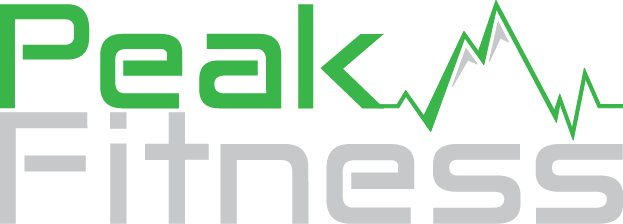How Much Rest Do You Really Need Between Sets?
Understanding the optimal rest periods between sets is essential for maximizing workout efficiency, enhancing performance, and achieving your fitness goals. At Peak Fitness, we offer a variety of classes tailored to different fitness objectives. This comprehensive guide explores the science behind rest intervals, and shows how our classes are designed to incorporate these principles effectively.
The Importance of Rest in Resistance Training
Rest between sets is crucial for several reasons:
Muscle Recovery: It allows muscles to replenish energy stores, clear metabolic byproducts like lactic acid, and repair microscopic damage caused during exercise.
Performance Maintenance: Adequate rest ensures that you can maintain high performance in subsequent sets, which is vital for achieving strength, hypertrophy, or endurance goals.
Hormonal Response: Rest periods can influence the hormonal environment, affecting muscle growth and recovery.
Tailoring Rest Periods to Training Goals
Different training goals require different rest periods. Here’s a detailed look at how rest intervals can be optimized for strength, hypertrophy, endurance, and fat loss:
Strength Training
Class: Barbell Strength
Goal: Maximize muscle strength.
Recommended Rest: 3-5 minutes between sets.
Rationale: Longer rest periods allow for complete recovery of the creatine phosphate system, essential for high-intensity, low-repetition training. This ensures you can lift maximal weights with proper form, enhancing neuromuscular adaptations and overall strength gains.
Hypertrophy (Muscle Building)
Classes: Muscle Building, Glutes & Abs
Goal: Increase muscle size.
Recommended Rest: 1-2 minutes between sets.
Rationale: Shorter rest periods maintain elevated levels of muscle-building hormones like testosterone and growth hormone, while still allowing sufficient recovery to perform multiple sets effectively. This balance promotes muscle fiber fatigue and subsequent growth.
Endurance Training
Class: Strength & Sweat
Goal: Improve muscular endurance.
Recommended Rest: 30-60 seconds between sets.
Rationale: Short rest periods challenge muscles to perform under fatigue, enhancing their endurance capabilities. This approach improves the muscle's ability to sustain prolonged activity and increases aerobic capacity.
Fat Loss
Classes: Bootcamp, Team Sweat
Goal: Maximize calorie burn and fat loss.
Recommended Rest: 30 seconds to 1 minute between sets.
Rationale: Shorter rest intervals keep the heart rate elevated, increasing calorie expenditure and boosting metabolic rate. This approach also incorporates an element of cardiovascular training into your resistance workouts.
Factors Influencing Rest Interval Needs
Several factors can influence the optimal rest period for an individual, including:
Fitness Level: Beginners may need longer rest periods due to lower conditioning levels, while experienced athletes might recover more quickly.
Type of Exercise: Compound movements (e.g., squats, deadlifts) that engage multiple muscle groups typically require longer rest than isolation exercises (e.g., bicep curls).
Load and Intensity: Heavier weights necessitate longer recovery times compared to lighter loads.
Training Volume: Higher training volumes may require more extended rest periods to maintain performance across all sets.
Volume, Intensity, Frequency
These three variables are interdependent and form the foundation of effective training programs. The optimal combination of volume, intensity, and frequency will vary based on individual goals, preferences, and training stage.
Rest periods directly impact these variables by influencing recovery, performance, and the overall training stimulus.
Metabolic Fatigue and Muscle Damage
Short rest periods increase metabolic fatigue, which can be beneficial for hypertrophy but may compromise performance in subsequent sets.
Longer rest periods allow for better recovery and less muscle damage, which is crucial for strength training and maintaining high performance.
The Hormone Hypothesis
Hormonal responses to different rest periods can affect muscle growth. Shorter rest periods tend to elevate anabolic hormones, while longer rest periods may optimize neural recovery and strength gains.
Practical Tips for Managing Rest Periods
To effectively manage rest periods in your training routine, consider the following tips:
Use a Timer: Consistency in rest periods is key to achieving desired training outcomes. A timer helps ensure you stick to planned rest intervals.
Listen to Your Body: Pay attention to how you feel during and after sets. Adjust rest periods based on energy levels and performance.
Stay Active: During rest periods, engage in light activities like stretching or mobility exercises to maintain muscle temperature and flexibility.
Track Progress: Keep a training log to monitor the effectiveness of different rest intervals and make adjustments as needed.
Timer we use at Peak Fitness : https://www.pushpress.com/workout-timer/workout-timer
Integrating Rest Periods into Your Training Program
To integrate optimal rest periods into your training program, follow these steps:
Define Your Goals: Determine whether your primary focus is strength, hypertrophy, endurance, or fat loss.
Plan Your Routine: Choose exercises and structure your workout sessions to align with your goals.
Set Rest Periods: Allocate rest periods based on the guidelines for your specific goals.
Monitor and Adjust: Regularly assess your progress and adjust rest periods as needed to ensure continued improvement.
Conclusion
Rest periods between sets are a critical component of effective resistance training. By tailoring rest intervals to your specific goals—whether it's building strength, increasing muscle size, improving endurance, or losing fat—you can optimize your workouts and achieve better results. Understanding the science behind rest periods provides a solid foundation for making informed decisions about your training regimen. Remember, the right balance of work and rest is key to achieving sustainable gains and long-term success in your fitness journey.




